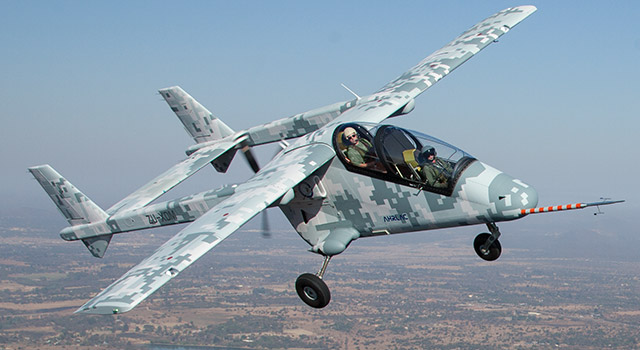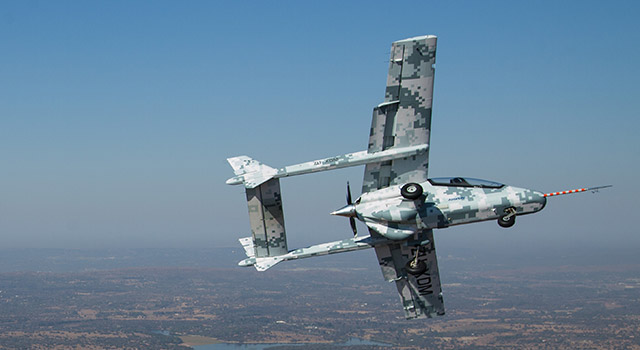
Paramount Group, Africa’s largest privately owned defence and aerospace business, this week took the wraps off the Ahrlac, a homegrown aircraft that offers a highly configurable payload system that allows it to be transformed quickly based on operational requirements.
The Ahrlac — it stands for “advanced high-performance reconnaissance and surveillance aircraft” — was conceptualised, designed, built and tested in South Africa and was designed from the ground up using industrial computer-aided design software. The process was completely paperless.
“Every single part of the aircraft was pre-designed on a computer, which allowed it to have a jig-less construction,” Ahrlac Holdings CEO Paul Potgieter says.
This means that every part fits together, much like a Meccano set, which saves vast amounts of money and time — especially when exporting it globally. We have made all the tools for production for all sheet-metal pressings and composite parts so it enables us to hit production much quicker than any other aircraft.”
Potgieter was also involved with one of South Africa’s other major military achievements, the Rooivalk attack helicopter, which was developed by Denel. He was the programme manager from concept to first flight on that project between 1984 and 1990.
Now, his son, Paul Potgieter Jr, is following in his footsteps as the programme manager for the Ahrlac.
There are over 60 engineers and technicians involved in the design and manufacturing of the Ahrlac and, since the launch of the project in September 2011, this team has spent over 315 000 man hours completing detailed designs and manufacturing the first prototype.

The Ahrlac consist of 6 000 parts, 98% of which are designed and produced locally by the engineering team.
Talking to TechCentral at the first public appearance of the Ahrlac at this year’s Africa Aerospace and Defence expo, Potgieter Jr says: “We took a completely fresh approach on the type of role this aircraft is intended for. We have moved the engine to the back as the main driver so that we could fly a large cannon in the nose. The pilots also have an unobstructed view as a result.”
Potgieter Jr says the plane can accommodate almost any system, including a camera, radar, Flir ball (thermal imaging) and jamming equipment, in the fuselage without obstruction from an engine. The payload of the pod system in the fuselage is 800kg. Night vision also works better when there is no propeller turning in the front of the plane.
Paramount opted for a Canadian Pratt & Whitney PT6A engine used in the Ahrlac was because every country is able to service it. “It makes maintenance anywhere in the world much easier.”
The Ahrlac also boasts a unique height and positioning of the wings.
Video of the first test flight of the Ahrlac (footage supplied):
“We moved the wings higher off the ground because what we typically see in African operations is that the runways are just jeep tracks and not well maintained. The higher clearance prevents wing damage from fences and the surrounding bush,” Potgieter Jr says. “The wing was also moved back from the cockpit to give pilots good visibility under all circumstances, even when the plane is turning.”
The Ahrlac can stay in the air for more than seven hours, useful for operations that involve patrolling large areas.
The first test flight for the Ahrlac took place on 26 July (see the video) and the first public flight happened on the 8 August. Paramount expects to deliver the first aircraft by the end of next year.
The company is setting up a factory in Pretoria, near the Waterkloof air force base. “We have industrialised the process and can build the aircraft quickly. The first prototype was built in two months. From there we can do it much faster.” — (c) 2014 NewsCentral Media




